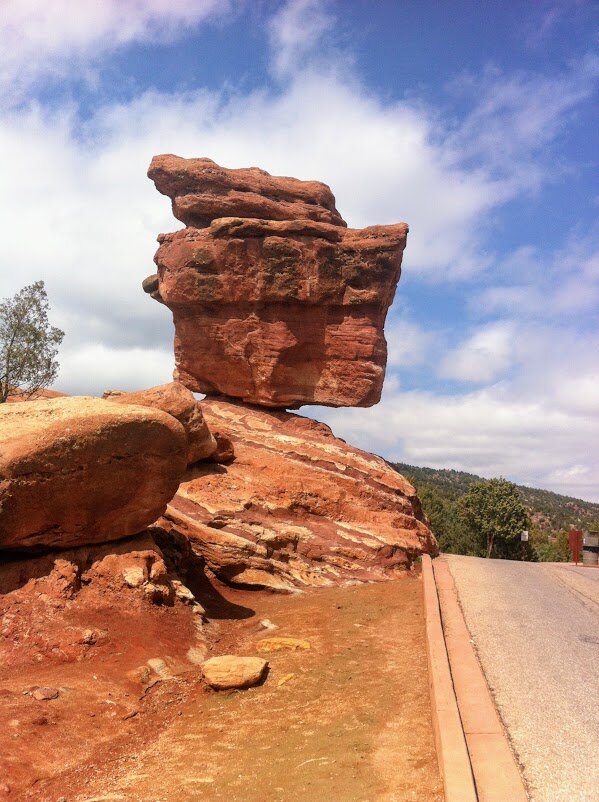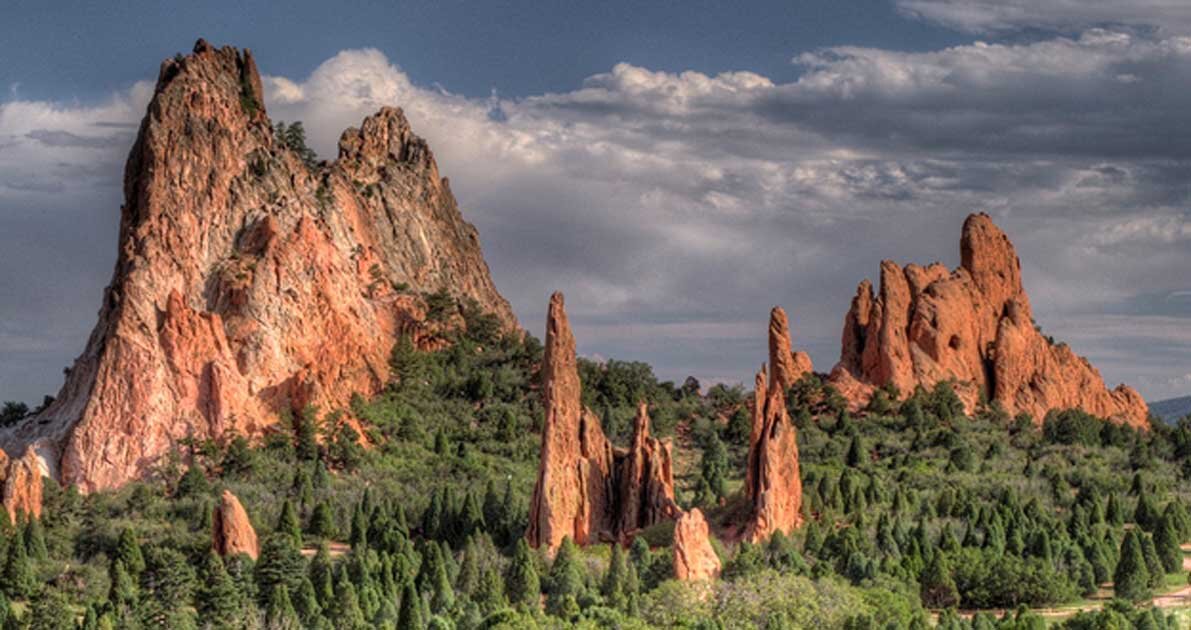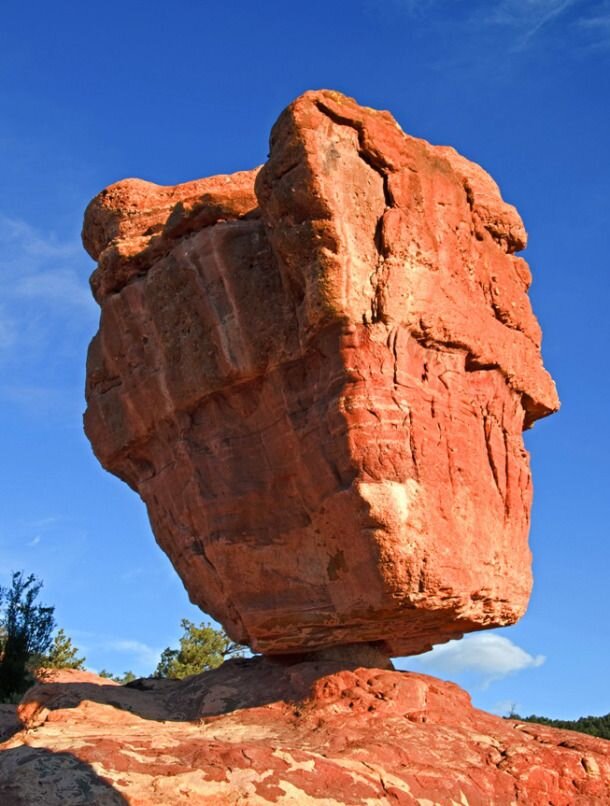Colorado Springs: Garden of the Gods Park
In April 2014 we took the longest vacation and road trip of our lives – 4 weeks and 9,000+ km from Calgary to Tucson and back, visiting many of the ghost towns, villages and cities along the way. It was a memorable experience that we still talk about frequently.
Garden of the Gods
As a result of two weeks of self-isolation due to the corona virus outbreak, I had time to revisit the thousands of photos I took on that trip. (Why I took some of them is beyond me, but that is a different story!)
What I did discover and realized I hadn’t shared was our “Garden of the Gods” experience. The Garden is a popular natural landmark nestled at the foot of Pikes Peak mountain on the west side of Colorado Springs, just 8 km from downtown. It is known for its massive red rocks sticking straight out of the ground and mysterious, hoodoo-like, sculptural rock formations. They defy the laws of gravity. It is not wonder indigenous people and early settlers were in awe of this place.
History
The Garden was neutral grounds for Native Americans for centuries before the arrival of Europeans. Rival tribes – Apache, Cheyenne, Comanche, Kiowa, Lakota, Pawnee, Shoshone and Ute were known to lay down their weapons when entering the garden. And, the Ute people, native to the area, often made their winter home near the formations.
In 1879, railway mogul, Charles Elliot Perkins, bought the land containing many of the unusual rock formations as he wanted the area to be open to the public for everyone to enjoy. Upon his death in 1907, his will deeded the land to the City of Colorado Springs with the stipulation it become a park and must remain FREE forever.
Today, the Garden of the Gods is a 1,334-acre park with 34 km of trails, that attracts over two million visitors annually. The park is also notable because five different ecosystems – cottonwood-willow, prairie-grassland, mountain shrub, pinyon-juniper and ponderosa pine – converge in the park.
The main trail the paved, 2.5 km Perkins Central Garden Trail, runs through the heart of the park's largest and most scenic red rocks is wheelchair accessible and child-friendly. More serious hikers, can research and plan a half or all-day hike. You will be aptly rewarded.
Famous Rocks
The most famous rock formation is Balanced Rock, composed of Fountain Formation sandstone, a combination of coarse sand, gravel, silica and hematite.
The hematite gives it the red hue. Balanced Rock was formed as erosive processes removed softer layers near its base, eventually leaving the precarious-looking formation seen today.
It stands 35 feet above its base and weighs about 1.4 million pounds.
Balanced Rock wasn't part of the original 480 acres at the Garden of the Gods given to the City of Colorado Springs as a free park by the children of railroad man Charles Eliot Perkins in 1909. Instead, it was private property until the city was able to buy its 275 acres for $25,000 in 1932.
The South Gateway Rock is also impressive looking a bit like a reclining buffalo. It is notable for what looks like the head of a First Nations chief on the rock face. The Siamese Twin Rock is accessible via a .8 km loop that is an easy walk and dog-friendly.
Sunrise and sunset are the best times to visit the park as the dramatic light is perfect for photography and makes the rocks even more eerie looking.
Last Word
If ever in the Colorado Springs area, the Garden of the Gods, a registered National Natural Landmark with its accompanying world class Visitor and Nature Center is a must see place to visit. Give yourself a few hours to explore the trails and visitor centre.
The celestial rock formations and the fiery red colour, will make you think you have gone to both heaven and hell.
If you like this blog, you might like these other blogs from our 2014 road trip:
Albuquerque’s 20,000 Unbelievable Petroglyphs
Zion National Park: Canyon Lookout Trail










